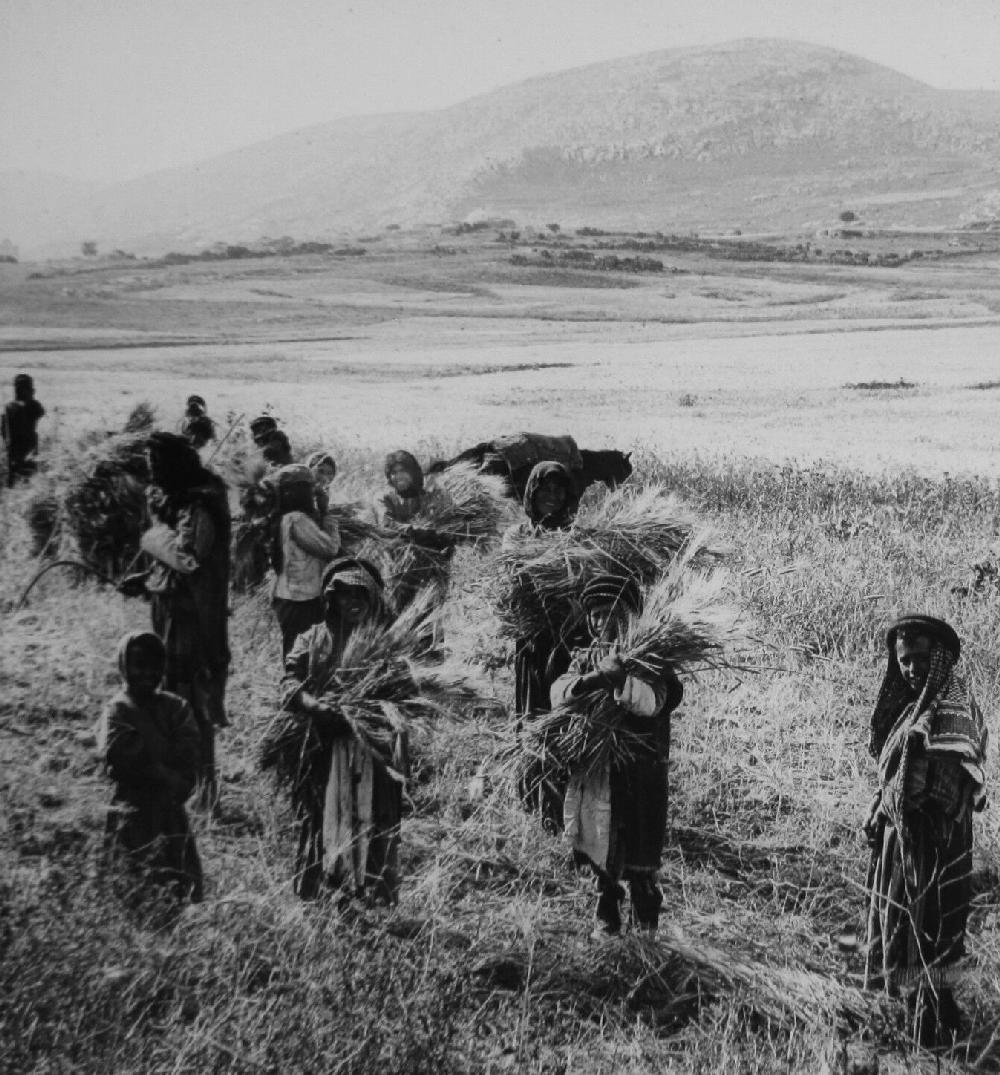
Child Labor: Middle Eastern and North African Country Trends

Figure 1.--This magic lantern slide shows Arab children wheat in the early-20th century. The dealer thought it might be Palestine. You can tell from the harvesting methods and the field that the yields were very low. In such circumstances, child labor was needed by the family and society. It is the absence of capitalism and the Industrail revolution that result in child labor. And notably there was no movement in Arab society to end child labor.
|
|
The Middle East and North Africa is both a gepgraphic and cultural constrt. It once spand three continents as a result of Ottoman expansion. The Ottomans were driven from Europe but succeeded in connecting western Asia with North Africa. It was in Mesopotamia (modern Iraq) that civilization was first invented as a result of Neolithic/Agricultural Revbolution. And from the dawn of civilization, almost all children worked and from an early age. Most of the population were paasnts. The girls woked at home, the boys in the fields. Civilization developed ovr time, but agricultural technology did not advanc significantly after the early inniovations like irrigation and animal domestication. And the limited yields meant that child labor was needed to support families and society as a whole. After the Islamic Golden Age (8th-14th century), the Middle East and North Africa declined as the Christian West rose fuled by the Renaissance and scientific revolution. The Middle East with a lack of technological innovation meant that the economies continued to be dependent on agriculture. And without technological change, yields did not increase. North Africa was different in that the ecomonies relied heavily on pirachy and African slavery. Without capitalism and the Industrial Revolution the ecomomy did not generate wealth much in advance of ancient times. This mean that child labor was needed to support the family and larger society. And the photographic record shows children working along with adults. Until after World War II, the population continued to mostly rural and involved in agriculture. The discovery of oil has changed this in some countries, but the technology used in the region is almost all imported.
HBC

Navigate the Boys' Historical Clothing Web Site:
[Return to the Main working boys country page]
[Return to the Main activities page]
[Introduction]
[Activities]
[Biographies]
[Chronology]
[Clothing styles]
[Countries]
[Bibliographies]
[Contributions]
[Essays]
[FAQs]
[Glossaries]
[Images]
[Links]
[Registration]
[Tools]
[Boys' Clothing Home]
Created: 2:57 AM 6/23/2019
Last updated: 2:57 AM 6/23/2019



